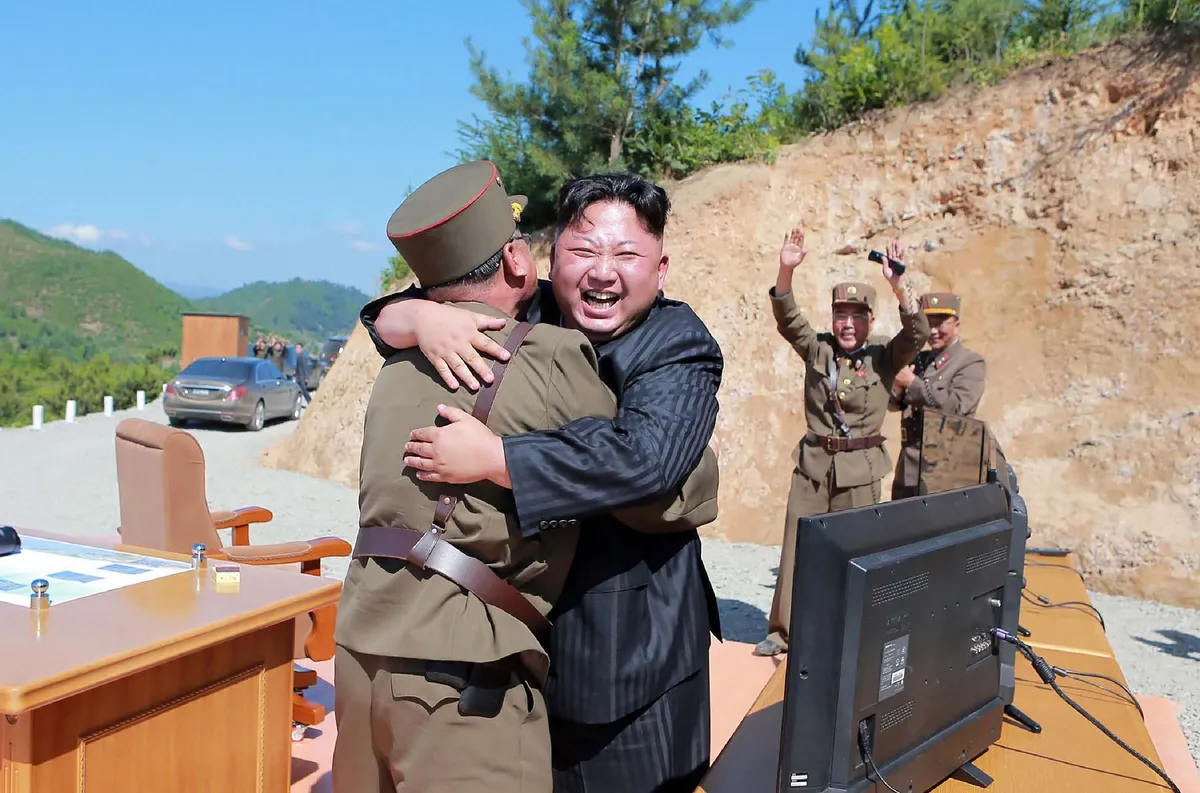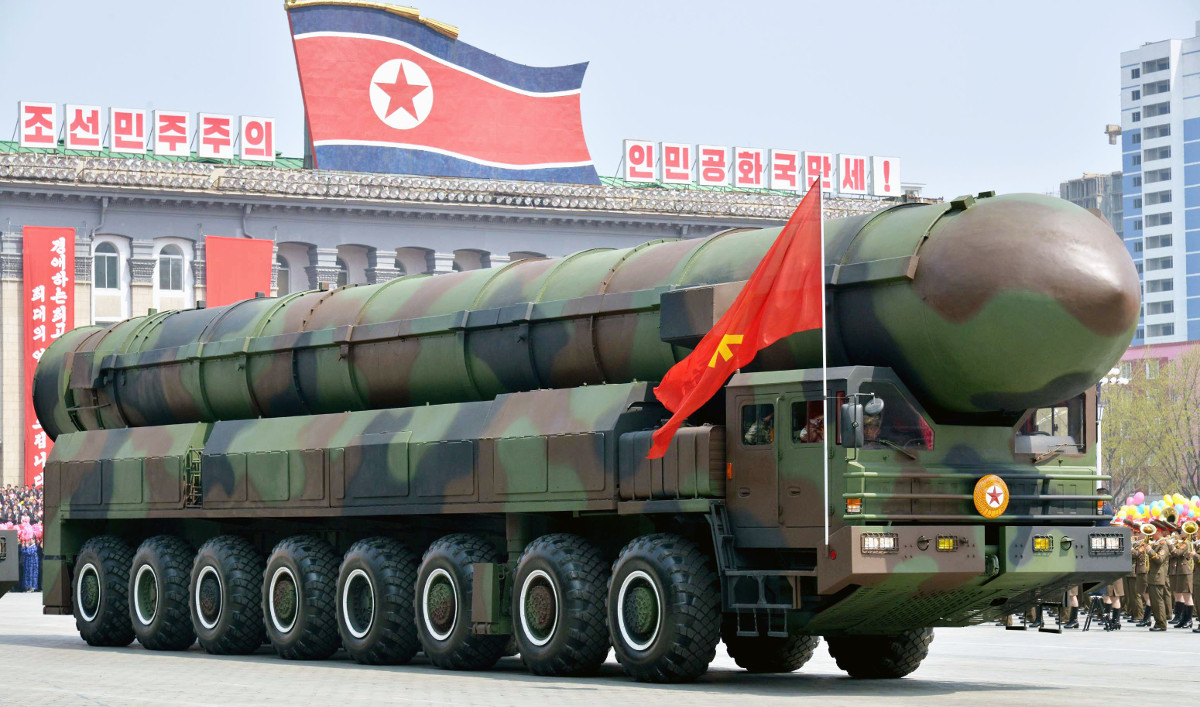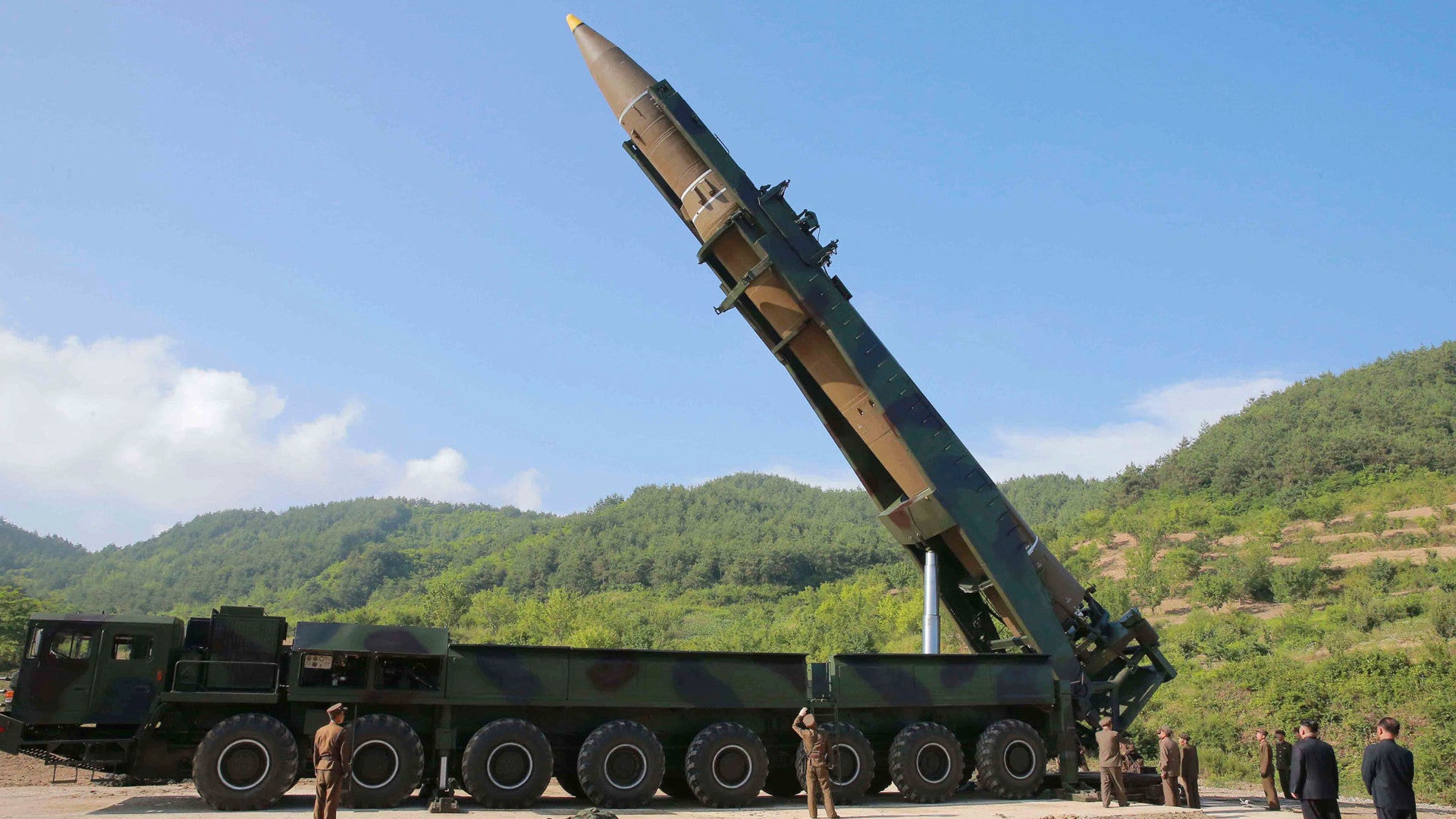North Korea has tested its second intercontinental ballistic missile (ICBM), which appeared to land somewhere in Japan’s Exclusive Economic Zone (EEZ) in the East Sea. The launch is the latest for the reclusive regime since it demonstrated the Hwasong-14 for the first time on July 4th, 2017. It likely involved either that same missile type or a derivative thereof. If initial estimates are correct, the weapon can hit the continental United States, able to reach at least west coast and possibly beyond.
The U.S. military confirmed the launch and that it involved an ICBM, but did not specify what type. The North Koreans fired the missile from the remote Mup’yong-ni in the country’s Janjang province. The missile flew for approximately 45 minutes before crashing into the sea some 600 miles from the launch site.
“We are working with our interagency partners on a more detailed assessment,” U.S. Navy Captain Jeff Davis, a Pentagon spokesperson, said in a statement. “The North American Aerospace Defense Command (NORAD) determined the launch from North Korea did not pose a threat to North America.”
However, this latter portion of the statement likely referred only to this specific launch. The missile’s apogee was reportedly nearly 2,300 miles, more than 300 miles higher than in the July 4 test. With that information, subsequent independent estimates put the weapon’s range at more than 6,000 miles with a payload weight sufficient to accommodate a nuclear weapon. With that range, it isn’t just Alaska, Hawaii, or even California that could be under threat. It could mean the North Koreans could launch an attack right into the middle of the continental United States. Although they would need a warhead and miniaturized nuclear device capable of surviving reentry to do so.
After the first Hwasong-14 test, experts had already speculated that the North Koreans had yet to demonstrate the missile’s full capabilities. So it is unclear whether or not this is just a more strenuous test of that design or a significant modification based on it. Regardless, it is a significant achievement that is likely to both anger and spook the United States and its East Asian allies.
After the launch, both the Japanese and South Korean governments did say they would convene emergency meetings of their national security staffs. “I have received information that North Korea once again conducted a missile firing,” Japanese Prime Minister Shinzo Abe told reporters. “We will immediately analyze information and do our utmost to protect the safety of the Japanese people.”

As the missile came down inside Japan’s EEZ, it initially looked as if the test might have a been a protest to very recent Japanese sanctions against North Korean individuals and entities. Earlier on July 28, 2017, the country’s cabinet reportedly agreed to implement new restrictions on nine people and five companies, including two Chinese firms, the Bank of Dandong and Dalian Global Unity Shipping. The United States had already sanctioned both of these organizations, among others, in response to North Korean missile activity in June 2017.
Initial reports even incorrectly suggest that the missile had landed inside Japanese territorial waters, within 12 miles of the shore. Though the country claims exclusive rights to natural resources within its EEZ, which extends out 200 miles from the coast, the area still qualifies as international waters. Still, “North Korea’s repeated provocative acts absolutely cannot be accepted,” Japan’s Chief Cabinet Secretary Yoshihide Suga declared.
However, this would not be the first time North Korean missiles have fallen into this zone. In May 2017, North Korea fired a barrage of much shorter range Scud-type ballistic missiles, three of which came down in Japan’s EEZ near the Oki Islands. This and other missile tests in the East Sea had already prompted Japanese authorities to look more closely at acquiring additional missile defenses, including the U.S. military’s Aegis Ashore system, to defend against potential attacks.
Instead, it now seems obvious that North Korea was more intent on demonstrating their increasing credible deterrent capabilities. In their report, the Associated Press
speculated that this was why North Korean officials decided to conduct a nighttime launch, which wouldn’t be an ideal scenario for flashy propaganda pictures and video. Firing an ICBM in the dead of night could have been meant as a demonstration of the country’s ability to respond at any time.
The test did seem to conflict with recent assessments that it was unlikely the North Koreans were close to launching another ballistic missile. “Currently, there’s no sign of an imminent North Korean missile launch,” South Korean Army Colonel Roh Jae-cheon, a spokesman for the country’s Joint Chiefs of Staff, had said at a press conference on July 27, 2017.

The U.S. military and others had already been expecting another missile launch to closely coincide with the anniversary of the Korean Armistice Agreement on July 27. This arrangement had stopped much of the overt fighting on the Peninsula, but did not include a formal peace deal, leaving North and South Korea technically at war to this day.
On July 20, 2017, CNN reported that the U.S. military had already spotted signs that another missile launch might be coming sometime in the next two weeks. It was unclear whether the test would come from a site on land or the sea, as there had been “unusual deployment activity” among North Korea’s submarine fleet.
And in spite of the reality, North Korea has declared the armistice date as Victory in the Fatherland Liberation War Day, celebrating the “defeat” of the United States and “puppet” allies. These events are often marked with military parades or demonstrations, including missile launches. In the end, the date came and went without a launch, possibly due to bad weather.
We don’t know why North Korean forces ultimately decided to wait, but it didn’t prevent them from reaching a significant milestone in their missile program. We’ll keep an eye out for additional information, but it seems increasingly clear that North Korea will present a threat to the continental United States itself far sooner than most ever imagined.
Contact the author: joe@thedrive.com
